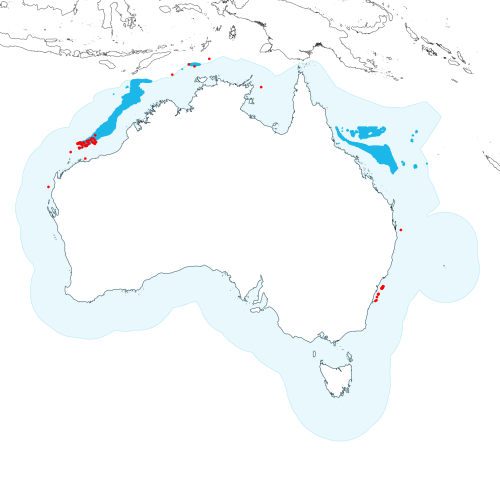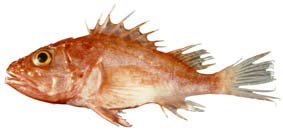Please login if you have access to particular applications.
Codes for Australian Aquatic Biota (CAAB) Taxon Report
Animalia (kingdom) » Chordata (phylum) » Actinopterygii (class) » Scorpaeniformes (order) » Setarchidae (family)
| CAAB Code: | 37 287013 |
| Scientific Name and Authority: | Lythrichthys dentatus Wada, Kai & Motomura, 2021 |
| Rank: | Species |
|
Distribution map:
View detailed map or click on map to see same.  Modelled distribution shown as blue polygon (source: Australian National Fish Expert Distributions) Updated on 2022-01-20. Occurrence locations [62] shown as red circles - View CSIRO Catch records Get expert distribution shapefile |
| Taxon Notes: | Updated from Setarches longimanus (var F) after reidentification of voucher specimen (which is now the holotype of L. dentatus) by Wada et al 2021. In Australia, known from Cape Lambert, Western Australia (18°58ʹ S, 117°12 ʹE) to Bathurst Island, Arafura Sea (10°02ʹS, 130°03ʹE) and from Lihou Reef and cays (17°02' S, 151°03ʹ E) south to Swain Reefs, Queensland Plateau, Queensland (21°20ʹ S, 153°32ʹ E) in 216-696 m (Wada et al 2021). | ||
Identifiers: |
|
| Record source: | Wada, Hidetoshi, Kai, Yoshiaki, Motomura, Hiroyuki, 2021. Revision of the resurrected deepwater scorpionfish genus Lythrichthys Jordan and Starks 1904 (Setarchidae), with descriptions of two new species, Ichthyological Research, Vol. 68: 373-403. doi:10.1007/s10228-020-00793-z |
